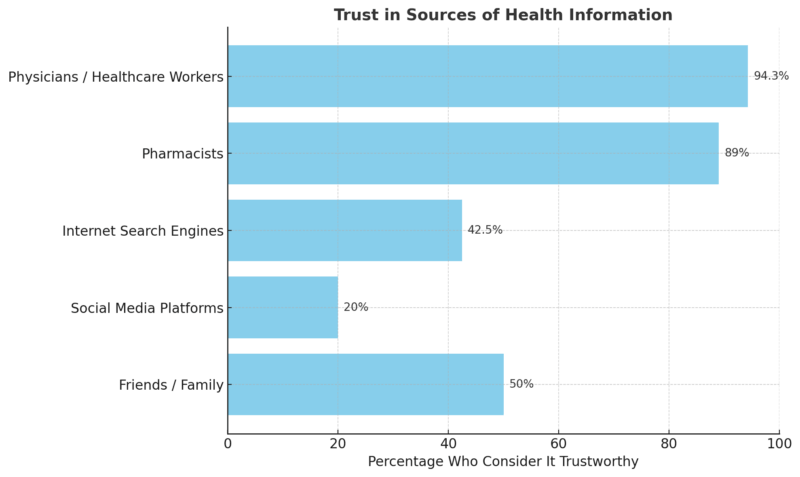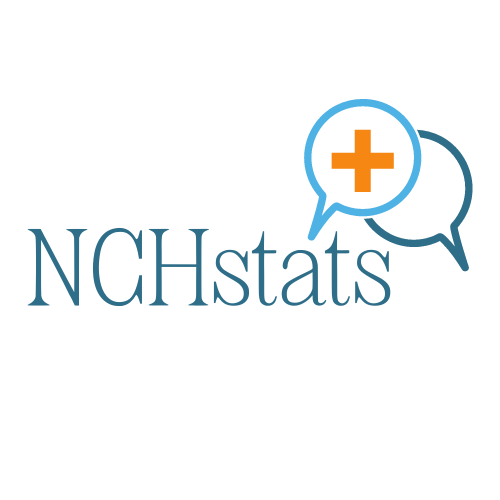Let’s not dance around it. Some online health articles pass the trust test, but a lot of them don’t. The internet is full of good information and bad advice living side by side, and unless you know how to tell the difference, you could end up following tips that do more harm than good.
According to Research Gate, around 67–70% of U.S. adults say they trust doctors “a lot,” while trust in online health content is only moderate. And yet, 80% of Americans still turn to Google or other search engines for health information.
The pattern is global; people are more comfortable using a search bar about their symptoms than calling a clinic. That means billions of health-related choices every year are shaped by articles people find online, which makes knowing how to measure trust essential.
Table of Contents
ToggleWhy People Keep Reading Health Articles Online

If we know doctors are more reliable, why do we still type our symptoms into Google at 2 a.m.? Two reasons: speed and accessibility.
According to a Pew Research Center survey, 35% of U.S. adults have tried to diagnose a health issue online, and 53% say they’ve looked up medical conditions for themselves or others within the past year.
The Trust Landscape – Who We Believe
Here’s what the numbers tell us about trust levels in health information sources:

Where Online Health Articles Go Wrong
Some online health articles are written by professionals, fact-checked, and kept up-to-date. Others… not so much.
1. Lack of Author Credentials
According to the Journal of Medical Internet Research, many health articles don’t list the author’s qualifications. Without knowing whether the writer is a licensed doctor or just a blogger with opinions, readers can’t accurately judge expertise.
2. Poor or Missing Sources
“Studies show…” is one of the most overused phrases in online health writing, and without proper citations, it’s meaningless. According to a 2022 BMJ review of 165 consumer health websites, fewer than 50% provided direct links to peer-reviewed medical research.
Even when citations were present, many linked only to secondary summaries or outdated studies rather than original journal articles.
The National Library of Medicine warns that vague sourcing makes it impossible for readers to verify claims or understand the strength of the evidence.
For example, an article might say “studies show vitamin D boosts immunity,” but fail to mention that the cited study was observational, involved a very small sample, or produced inconclusive results.
Without transparent, accessible references, readers have no way to judge whether a health claim is grounded in solid science or anecdotal interpretation.
3. Sensational Headlines
Health misinformation doesn’t just come from obscure blogs; it can start with mainstream outlets chasing clicks. A 2014 study published in The Research Gate found that 40% of press releases from universities and medical journals exaggerated the practical implications of research, while 33% incorrectly implied causation from correlation.
Even more concerning, 36% generalized animal study findings to humans without noting the limitations.
Time Magazine’s review of medical news coverage concluded that this pattern filters down to journalists: when a press release contains exaggerated claims, up to 81% of subsequent news articles repeat them without correction.
This means that a headline like “Cure Your Cancer in 3 Days with This Fruit” doesn’t just appear on clickbait sites; it can be seeded by misinterpreted science and then amplified across major media channels.
The World Health Organization (WHO) has identified sensational health headlines as a leading driver of public misunderstanding, particularly during health crises where panic and urgency can cloud judgment.
4. Conflicts of Interest
Bias isn’t always obvious; it’s often baked into the business model of the site hosting the article. According to Cochrane’s conflict-of-interest policy, commercial involvement in the funding or writing of health content increases the risk of skewed conclusions in favor of a sponsor’s product.
A 2017 systematic review published in PLOS Medicine examined over 200 industry-sponsored health studies and found that 78% were more likely to report positive outcomes compared to independently funded studies.
When these studies are then used as the backbone for consumer articles, without disclosure, readers are essentially consuming marketing material disguised as medical advice.
For example, an article recommending a “clinically proven” supplement might link to a study conducted by the supplement’s manufacturer. Without a clear conflict-of-interest statement, most readers will assume the recommendation is impartial when in fact it is financially motivated.
The U.S. Federal Trade Commission (FTC) requires that any material connection between a writer and a product be disclosed clearly. However, enforcement online is inconsistent, and many smaller health sites bypass these guidelines entirely, creating a hidden trust gap.
Spotting Hidden AI-Written Content

In recent years, some health websites have begun using AI to produce articles at scale. While AI can help organize information quickly, it can also introduce factual errors if the content isn’t reviewed by a medical professional.
Tools like the AI text detector by AHelp are becoming increasingly important for identifying when an article might have been machine-generated. This matters because readers need to know whether they’re getting expert-driven health guidance or auto-generated text that hasn’t been vetted for accuracy.
The TikTok Problem – Speed vs Accuracy
A 2025 study of TikTok’s most popular birth-control videos found:
(According to The Australian, these videos reach millions, often faster than any official health campaign.)
How to Apply the “Trust Test” as a Reader
Here’s a practical checklist you can use every time you read a health article:
Trust Test Question
Why It Matters
Red Flag Example
Good Example
Who wrote it?
Credentials prove expertise
No author name listed
MD with a specialty in cardiology
Are there references?
Supports claims with evidence
“Studies show” with no link
Links to peer-reviewed journals
Is there bias?
Avoids hidden agendas
Recommends only products sold by the site
Lists multiple treatment options
Is it current?
Medicine changes fast
Uses the 2015 guidelines for COVID
Updated in 2024 with new CDC data
Do other credible sources agree?
Confirms accuracy
Info not found anywhere else
Matches WHO and Mayo Clinic advice
Why Accuracy Matters Beyond the Individual
This isn’t just about whether you get the right answer for a sore throat; it’s a public health issue.
A single viral post discouraging vaccines, for example, can affect thousands of people’s decisions, leading to real-world outbreaks.
The Role of HONcode and Other Verification Systems
The Health On the Net Foundation developed HONcode, a certification given to websites that meet strict editorial and transparency standards. According to research, HONcode-certified sites consistently score higher in information quality.
However, ONcode certification is voluntary, and some excellent sources (like the CDC) don’t use it simply because their trust comes from other forms of recognition.
How to Stay Informed Without Falling for Misinformation
According to health literacy experts, the safest approach is triangulation, checking the same claim against at least three credible, independent sources.
Example: If you read that green tea “reverses” heart disease:
If all three sources agree, the claim is likely sound. If they don’t, you’ve just saved yourself from believing a half-truth.
Final Word

Online health articles can pass the trust test, but you have to be an active, critical reader. Look for who wrote it, how they support their claims, and whether other experts agree.
If it’s transparent, evidence-based, and updated, it’s worth your trust.
Related Posts:
- Is It Possible to Increase Your IQ Through Practice?…
- 10 Latest Breakthroughs in Medical & Test Equipment…
- Is an Online DNP Program a Good Investment? Breaking…
- The Rise of Online Nursing Programs - Are They the…
- Health Insurance Coverage - National Health…
- New Sentara Wellness Center Aims to Enhance Community Health








